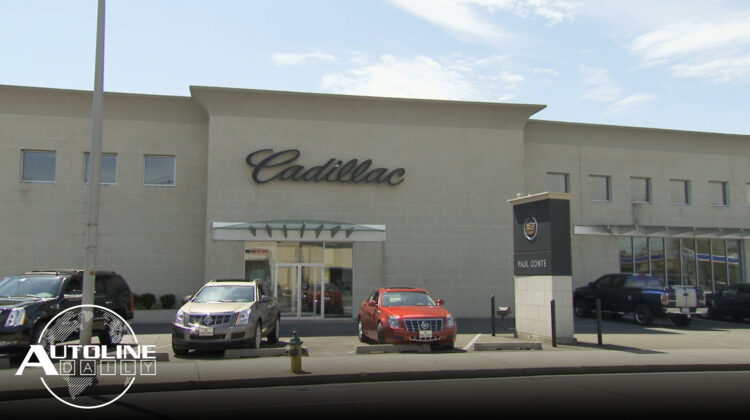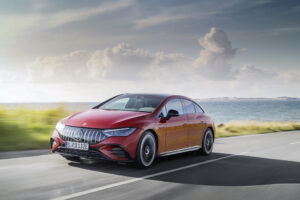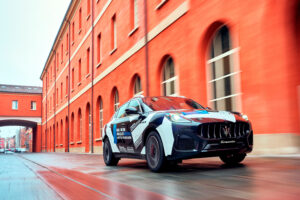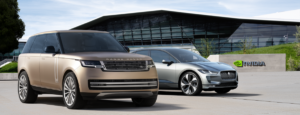

Follow us on social media:
Runtime: 10:41
0:08 Car Dealers Are Ripping Off American Consumers
1:16 Headlamps Are Exhibit #1 For Government Bureaucracy & Red Tape
2:22 EVs Could Cause Overcapacity Problem
4:01 Tech Details On M-B’s First Electric AMG
5:33 Tesla Lines Up Lithium Supplies
6:08 First Look at Maserati’s New SUV
6:34 Euro NCAP Evaluates Delivery Vans
8:09 NVIDIA Teams Up with JLR
8:54 Intel to Boost Automotive Business
9:20 Join Jim Farley For a Fireside Chat
Visit our sponsors to thank them for their support of Autoline Daily: Bridgestone, Intrepid Control Systems and Schaeffler.
This is Autoline Daily, the show dedicated to enthusiasts of the global automotive industry.
CAR DEALERS ARE RIPPING OFF AMERICAN CONSUMERS
American car buyers are getting ripped off. New data from Edmunds shows that 82% of new car buyers in the U.S. in January paid above the sticker price. That’s a staggering increase from a year ago when only 3% paid above the manufacturer’s suggested retail price, the MSRP. And it was just 0.3% in January of 2020. Edmunds says that on average, new car buyers paid $728 above MSRP, and that is also a massive jump from a year ago when consumers paid about $2,100 below MSRP. Cadillac is number one in pricing vehicles above MSRP. Those buyers paid an average of $4,000 more for their new Caddy. Car companies are hopping mad about this. GM and Ford even had to send letters to its dealers telling them to stop charging over MSRP. Up to now, we thought about 10% of dealers were overcharging their customers. But this report shows that the vast majority are doing it.
HEADLAMPS ARE EXHIBIT #1 FOR BUREAUCRACY & RED TAPE
As weird as it sounds, headlamps are Exhibit #1 for U.S. government bureaucracy and red tape. Starting in 2023, automakers will be allowed to use headlamps that use adaptive beams, which can help prevent nighttime glare for oncoming motorists. In 2023. Toyota petitioned NHTSA to use these lamps in 2013. So it took 10 years. And it’s not as if this is some kind of new technology that has to undergo all kinds of testing. Europe has been using these headlamps for years. They’re LED lamps, and they allow specific diodes in a lamp to switch off so oncoming drivers don’t face any glare. Here’s our Autoline Insight. It’s inexcusable that it takes a decade to write new headlamp regulations. And this is not a new problem. Back in the 1970s, when all cars used round headlamps, it took NHTSA five years to write a new regulation to allow automakers to use square lamps. Five years to go from round to square.
EVs COULD CAUSE OVERCAPACITY PROBLEM
Volkswagen is going to build a new assembly plant for electric cars on the site of its giant manufacturing complex in Wolfsburg, Germany. Or at the very least it’s going to build it close by. And this highlights one of the dilemmas that traditional automakers face as they transition from internal combustion cars to electric ones. They have to build both at the same time. While some other automakers like BMW and Mercedes are building ICE cars and EVs in the same plant, they’re sacrificing a lot of efficiency. Assembly plants that are dedicated to making only EVs are 25-30% more efficient because electric cars need fewer components. That means there are fewer stations on the assembly line, which means the line can be shorter, which means you don’t need as many workers. But by building a new plant for EVs, that means at some point down the road, as sales of ICE cars drop off, the plant that makes ICE cars will probably have to close. Maybe it could be converted to make EVs. But Europe already has 2 million units of overcapacity, so the most likely scenario is that a good chunk of those ICE assembly plants will not be converted to make EVs. They’ll just shut down.
TECH DETAILS ON M-B’S FIRST ELECTRIC AMG
Mercedes is sharing details about the AMG versions of the all-electric EQE sedan. First, let’s start with the technical highlights. There’s the EQE 43 and EQE 53 and both feature two electric motors. The 43 has a combined 350-kW or 476 horsepower and will do 0-100 km/h in 4.2 seconds. The 53 has 460-kW or 626 horsepower or as much as 687 horsepower for a short time with an optional AMG package and boost function. It will do 0-100 km/h in either 3.5 seconds or 3.3 with the boost function, but the battery must be at least 70% charged. As for the battery, it has a little over 90-kWh of usable space and features a unique battery management system. Based on the WLTP test cycle, Mercedes expects a range between 444 to 533 kilometers or about 276 to 331 miles. The all-wheel drive, air suspension and braking systems are also unique to the AMG EQE. We’ll see a few more AMG versions of Mercedes’ BEVs, but after that there will be stand-alone AMG electric vehicles that are built on a new platform that was developed in-house.
TESLA LINES UP LITHIUM SUPPLIES
The race is on in the auto industry to secure the raw materials needed to make batteries and motors for electric vehicles. And Australian mining company Liontown Resources says it signed a five-year deal with Tesla to supply it with lithium. Tesla will receive 100,000 dry metric tons in the first year starting in 2024 which will increase to 150,000 dry metric tons after that. The shift to electric cars is causing the price of lithium to soar, it’s now eight times higher than it was a year ago.
FIRST LOOK AT MASERATI’S NEW SUV
Here’s a better look at Maserati’s 2nd SUV, the Grecale. It only provided that it will make its full debut on March 22nd. But we do know it will slot in below the larger Levante and as you can see it wears a number of Maserati’s signatures, like an oval-ish grille with its trident in the middle and three faux exhaust ports on the side fenders. Other than that, it looks like a pretty typical utility vehicle.
EURO NCAP EVALUATES DELIVERY VANS
In Europe, the New Car Assessment Program or Euro NCAP released a report that evaluated the crash avoidance systems and performance of commercial vans. It tested 19 vans and for the first time, one achieved its top platinum rating. That was the Fiat Ducato, which is sold in the U.S. as the Ram ProMaster. That’s because it’s now equipped with Automatic Emergency Braking for both pedestrians and cyclists and the Ducato excelled in those tests. Last year, five vans landed on Euro NCAP’s “Not Recommended” list but this year it was only one, the Nissan Interstar, which was previously named the NV400. Euro NCAP says that overall these vans are better equipped than they were a year ago and their safety systems perform better. But it is disappointed that most of the safety systems are optional instead of standard.
NVIDIA TEAMS UP WITH JLR
Tech companies keep finding new business in the automotive industry. NVIDIA is teaming up with Jaguar Land Rover to supply not just chips, but an entire technology stack that will go in all of JLRs cars and SUVs. It’s all part of the auto industry’s transition to software defined vehicles. NVIDIA’s stack, what it calls the Hyperion 8 platform, will give JLR the capabilities for Level 3 autonomous driving, automated parking, driver monitoring and better ADAS. And of course, it offers over the air updates. The first Jags and Land Rovers with the new electronic architecture will hit the road in 2025, which, as you’ll remember, is when Jaguar is supposed to go all electric.
INTEL TO BOOST AUTOMOTIVE BUSINESS
Intel also has its eyes on growing its automotive business. It’s going to buy Tower Semiconductor for $5.4 billion. Tower is a leading producer of analog chips, which many automakers still use for safety systems, like air bag sensors, ABS and stability control. They’ll continue to operate independently until the deal is completely done, which should be about a year from now.
JOIN JIM FARLEY FOR A FIRESIDE CHAT
Anyone that would like to learn more about Ford’s future plans can tune into a fireside chat with CEO Jim Farley on February 23rd. Topics will include optimizing the transition from internal-combustion to battery-electric vehicles, software and services, and Ford Pro. Participants are encouraged to register for the webcast online and we’ll provide a link in the transcript and description box.
HOW LONG CAN THE ICE LAST?
And you can join us for our own fireside chat on Thursday, which will be the polar opposite of what Jim Farley will be talking about. We’ll be talking all about internal combustion engines. How long can automakers hold onto them? What can they do to cut emissions and boost fuel economy? How will automakers handle the transition? That’s the topic for Autoline After Hours tomorrow, when we’ll have engine expert James Martin from IHS Markit.
But that’s a wrap for today. Thanks for joining us and we’ll be right back here again tomorrow.
Thanks to our partner for embedding Autoline Daily on its website: WardsAuto.com
Seamus and Sean McElroy cover the latest news in the automotive industry for Autoline Daily.









